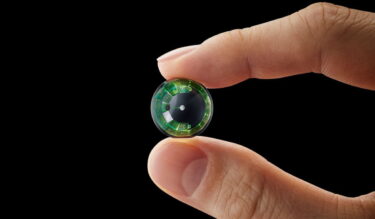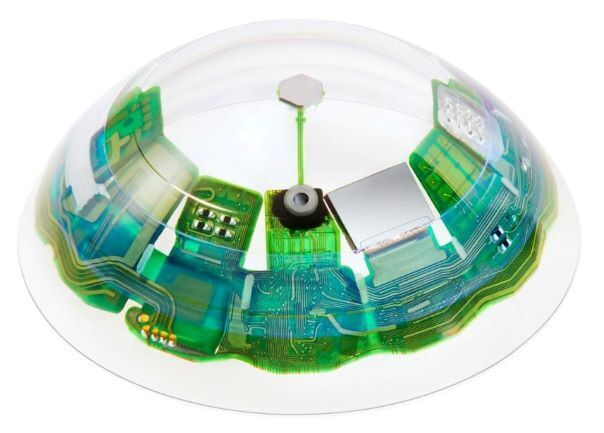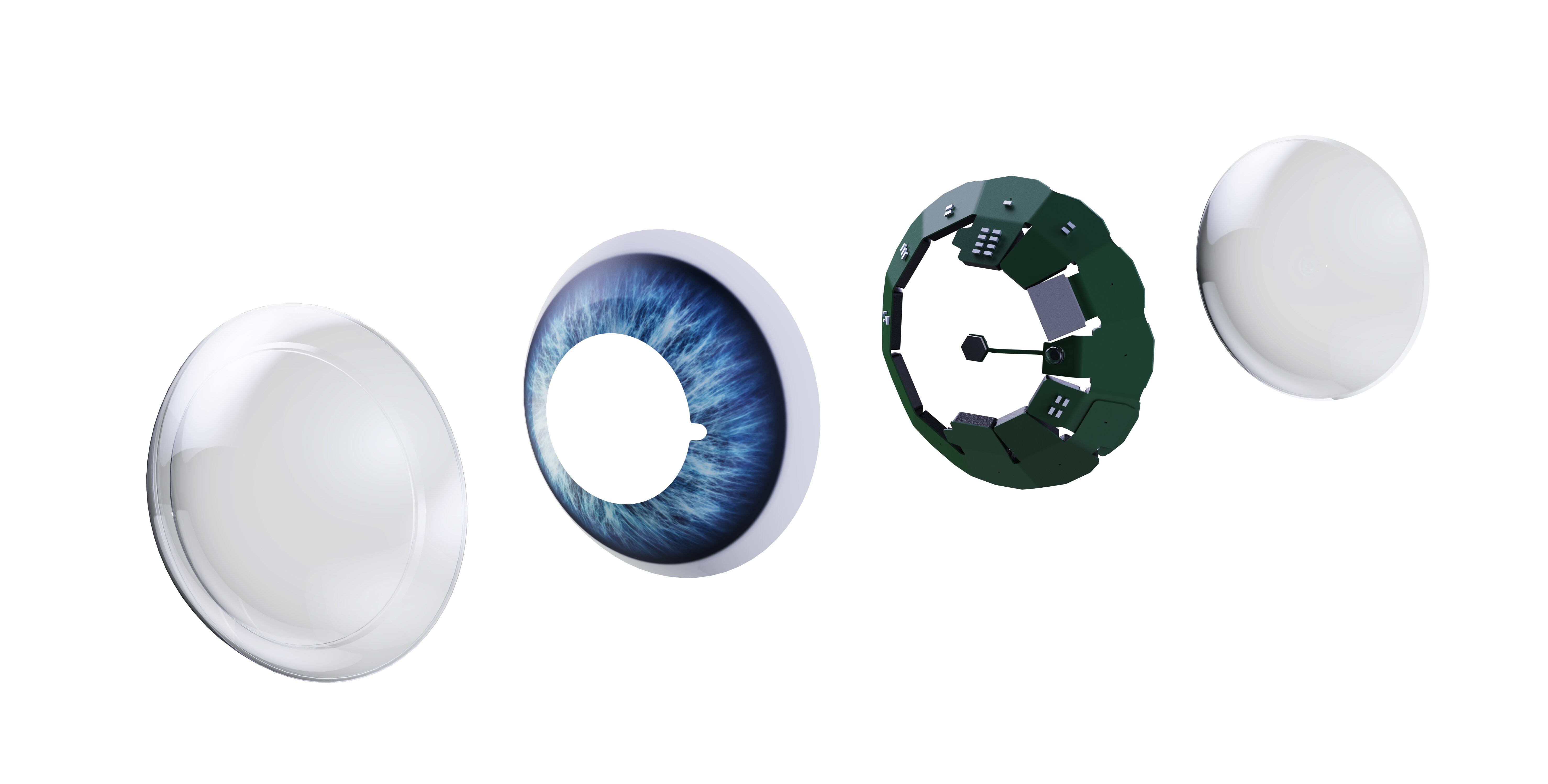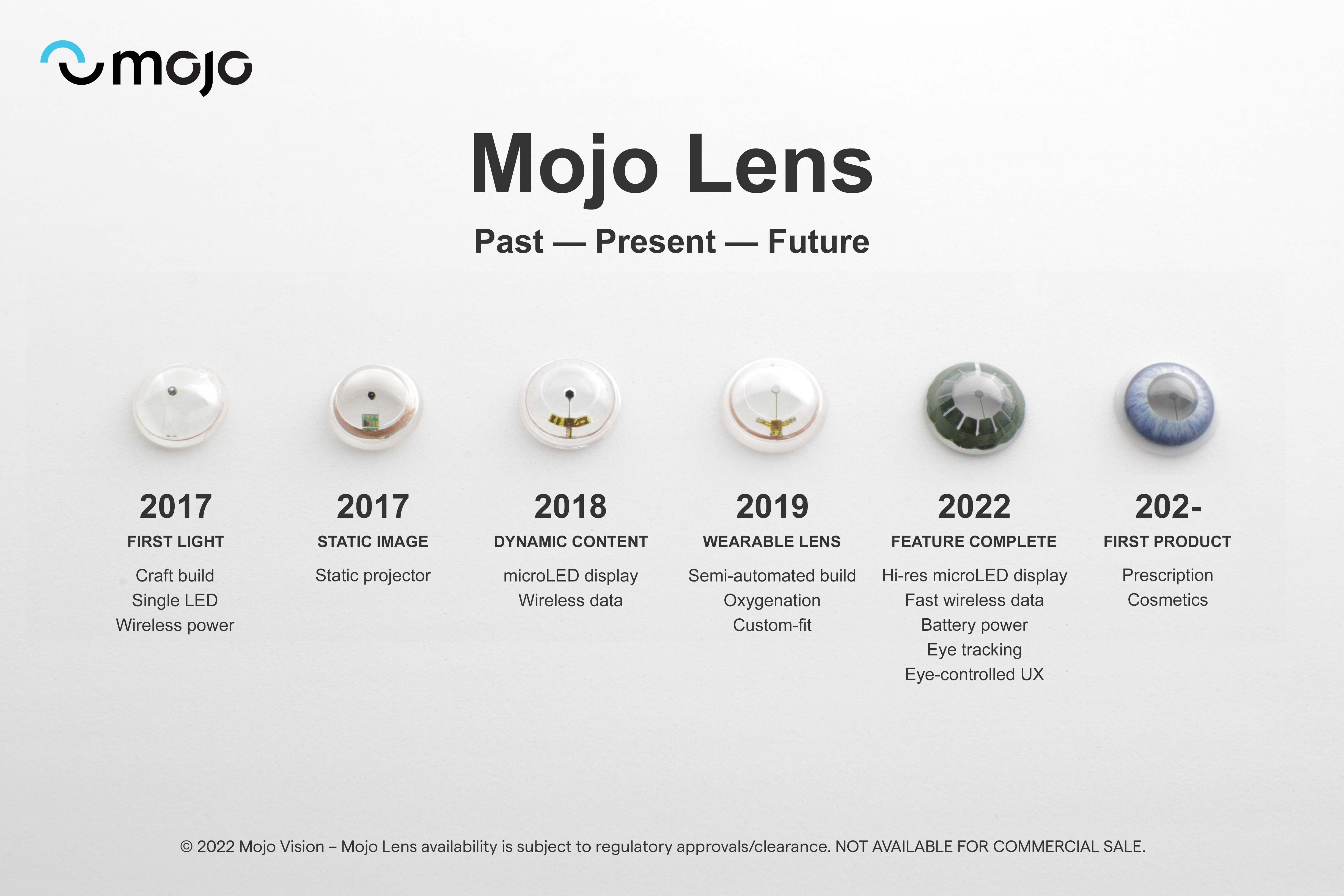AR contact lens: This is the new Mojo Lens prototype

The AR contact lens Mojo Lens is moving further towards market readiness. The lens' manufacturer, Mojo Vision, unveils a new prototype.
Content
The AR contact lens Mojo Lens is a small and a big technology wonder - small in dimensions, big in the know-how that goes into the lens.
Over the past few years, the developers at Mojo Vision have constructed a technically spectacular hard contact lens with a self-developed mini-display, an ARM0 processor with 5-Ghz module, various motion sensors, eye tracking and proprietary wireless technology for content streaming.
Even micro-batteries from the implant medicine are integrated into the lens. Despite all the technology, the Mojo Lens has roughly the same dimensions as conventional hard contact lenses and is supposed to offer comparable comfort, according to the manufacturer.
New Mojo Lens prototype is “feature complete”
Mojo Vision calls its tech contact lens an "invisible computer" because it is omnipresent and at the same time invisible to outsiders - unlike, say, the smartphone in your hand.
For the latest Lens prototype, which Mojo Vision says is "feature complete," the startup describes "major advances" for the display, wireless networking, power supply and eye tracking. The eye tracking is based only on motion sensors and algorithmic processing and is supposed to outperform current optical eye tracking systems many times over, according to Mojo Vision.

The latest prototype of the Mojo Lens has all hardware functions on board. Now further tests are in the pipeline. | Image: Mojo Vision
At the heart of the lens is the display, which the manufacturer says resolves at 14,000 pixels per inch with a diameter of less than 0.5 mm and a pixel pitch of 1.8 micrometers. According to Mojo Vision, the specially developed screen is the smallest and densest display in the world. However, the screen continues to display content only in shades of green even in the latest prototype (sample videos below).
The new prototype is the first to offer an operating system that can be controlled by gaze. The operating system is intended to open the door for research and development of further application scenarios together with partners and consumers. To this end, Mojo Vision is cooperating with media and sporting goods companies, among others.
Neck computer serves as a streaming device
The Mojo Lens is fed by a streaming computer that is worn around the neck. The neck computer streams content at extremely low latency via a proprietary communication protocol directly to the lens and processes its sensor data, such as motion information.

The structure of the Mojo lens. The computer ring in the lens receives and transmits data via a proprietary data protocol from a streaming computer that is placed over the neck. | Image: Mojo Vision
The protocol is designed for the lowest possible power consumption of the lens to conserve its batteries and minimize latency. The Mojo protocol is supposed to be more efficient and faster than Bluetooth LE. Therefore, and because of a secured interference-free transmission between neck and eye computer, direct streaming, for example from the smartphone or from the cloud, is currently not possible.
The lens' batteries are expected to last about two hours of continuous use. Mojo Vision's goal is for Mojo Lens to last a day with normal use. Charging the lens is simply done via its cleaning container.
Mojo Lens on track for market launch
Mojo Lens is expected to be on the market in about five years as a vision enhancer for people with visual impairments as well as for everyday applications. In vision enhancement, the lens can, for example, increase contrast, visually enhance edges or zoom in.
During sports, the lens can display relevant measurements in the field of vision, e.g. running or driving speed. In everyday life, calendar or route information can replace looking at the smartphone.
The viewing angle is currently 15 degrees and the image is continuously displayed on the fovea, the sharpest point of vision. The image section follows the eye movements via eye tracking, comparable to a torch in a dark room - so you always see a section of the entire image. The following videos illustrate this.
Mojo Lens on the bike ... | Video: Mojo Vision
... or as a travel assistant in everyday life. | Video: Mojo Vision
Mojo Vision doesn't necessarily see its technology as a replacement for future data glasses, but it wants to secure significant shares of the emerging market. The startup predicts that 20 to 30 percent of smart glasses users could prefer tech contact lenses.
In terms of price, Mojo Vision hopes to reach the region of high-end smartphones. However, the purchase will be a little more complicated than with smartphones: as is usual with hard contact lenses, the lenses have to be customised for the potential wearer. So for the time being, there will be no one-size-fits-all Mojo Lens that can be ordered online with a single click.
Medical use first, everyday use as the goal
Mojo Vision's next step is to conduct further tests with users and partners, as well as clinical trials with people with normal vision and the visually impaired. The medical mission is to help millions of people with uncorrectable vision loss.
Mojo Vision certainly doesn't lack confidence: "The most common thing we hear as we share this latest prototype is, 'I knew there would be smart contact lenses, but I thought they were 10 or 20 years out, not now'," writes Mojo Vision founder Mike Wiemer in the company's blog.

Mojo Vision's roadmap: Starting with the current prototype, the first lens is expected to hit the market in the next five years. | Image: Mojo Vision
My impression after talking at length with Mojo marketing chief Steve Sinclair is that Mojo Lens offers impressive technology. This makes Mojo Vision an interesting partner and takeover candidate for tech companies like Meta or Apple.
However, with currently about 110 employees and raised capital of about $205 million, the startup is rather small and probably underfunded. It would like to raise more funds. The fact that the lens has to be custom-made for each person and that an additional computer has to be worn around the neck I think is the biggest barrier to entry into the B2C market. Mojo Vision will work on further refinements.
Read more about Augmented Reality:
- Impressive demo: Mixed Reality puts a virtual kitchen in real space
- Tilt Five: AR game console launches soon with 16 AR games
- Semi-virtual computer: Developer shows impressive video
Note: Links to online stores in articles can be so-called affiliate links. If you buy through this link, MIXED receives a commission from the provider. For you the price does not change.